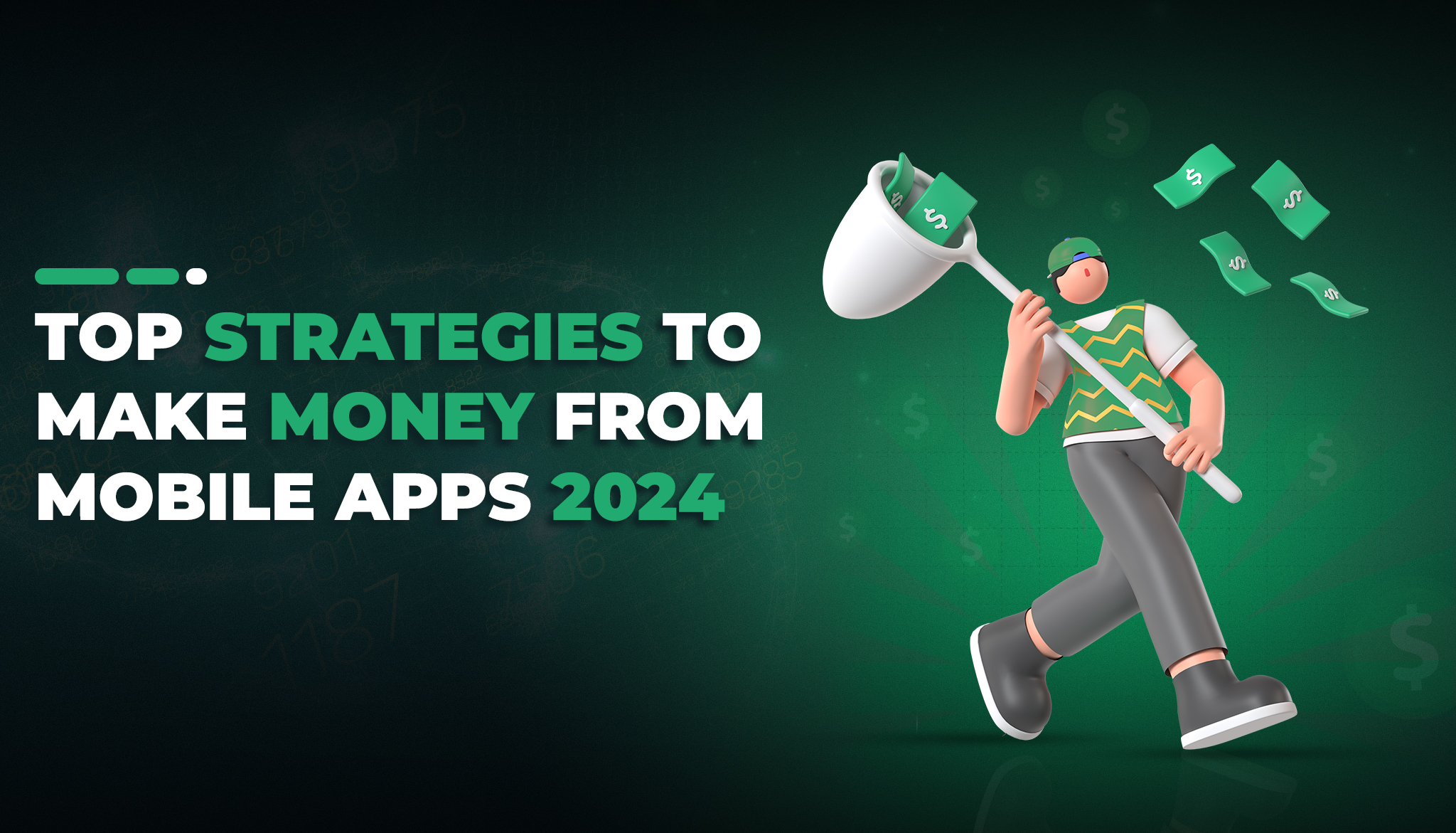We all know how mobile applications play an important role in helping businesses gain popularity. They attract large numbers of audiences to their business. But have you ever thought about while scaling your business your app can also earn revenues while you sleep? Today, for many smart business owners and developers this option is not just a dream, but an achievable job.
Navigating the world of app monetization demands a strategic mindset, especially in a competitive market. To unlock your app’s earning potential it is necessary to understand different revenue models. It is also important to see how these models align with your app’s purpose and target audience. Whether it be in-app purchases, subscriptions, advertisements, or a freemium model. The right monetization strategy can greatly contribute to the success of your application.
From Concept to Development!
Considerations for Developing an App For Passive Revenues
When developing an app aimed to generate passive revenue, many key considerations must be addressed. Here are the main factors to keep in mind:
App Purpose
You should be thoroughly aware of your app’s purpose. Is it designed for entertainment, productivity, education, or another purpose? This will guide its features, design, and overall user experience. An app with a clear, appealing goal is likely to get more users, which is important for making passive revenue.
Target Audience
Identify and understand your target audience. Consider factors such as age, interests, and user behavior. A well-defined target audience allows you to create more fruitful marketing strategies and help choose suitable monetization methods.
Competitor Analysis
Carry out a comprehensive analysis of competitors. Look for similar apps in the market and take notes of their strengths and weaknesses. Look at their monetization strategies, user reviews, and market positioning. This helps you identify gaps in the market and opportunities to differentiate your strategies.
Types of Mobile Apps
Figuring out what kind of app you have is important for choosing the best ways to strategies monetization. Different types of apps have different user behaviors and preferences. Consider a social media app, where users expect free access with multiple features. Here, ads and in-app purchases are suitable. While productivity app users might prefer paying for premium features or subscriptions.
Each app category attracts a specific type of audience, so adjusting monetization strategies to your audience’s preferences is the key. Knowing your app category also helps you study competitors and innovate your strategies.
If you pick the right strategy as per your app’s category, you’ll meet users’ needs and make the most out of it. This will help your app compete in this competitive market. Below are some app categories and the monetization strategies that are ideal for them.
Social Media Apps:
These apps connect people and let them socialize online. Here, users expect free access with more features, making ads and in-app purchases suitable.
Gaming Apps:
Designed for entertainment, these apps range from simple puzzle games to complex multiplayer games. Because players use gaming applications for a brief period, in-app purchases and ads are preferred for this category.
Lifestyle Apps:
These apps help users with daily activities such as fitness, travel, and more. Think of apps like MyFitnessPal, and TripAdvisor. Freemium models can be used in this category.
Educational Apps:
These apps provide learning resources and courses on various subjects. Duolingo and Khan Academy are well-known educational apps. With longer user sessions, these apps might benefit more from subscriptions or freemium models.
Best Monetization Strategies

In-App Advertising
In-app advertising allows you to earn revenue by displaying ads on your app. Users interact with these ads, and you earn money based on the user interactions. There are different types of ads, like banners, videos, and native. Each one can bring in different amounts of revenue for you. These ads can earn $10 up to $200 based on the interaction and number of users on your app.
Advantages of In-App Advertising:
- Reaches a targeted audience interested in your app’s content.
- Provides a relatively quick method to start generating revenue.
- Expands your app’s visibility to potential users.
Considerations:
- Increased competition within your app for user attention.
- User engagement with ads can vary, affecting overall revenue.
Subscription Model
The subscription model requires customers to pay a monthly or yearly fee in exchange for certain services. This model is popular for apps offering exclusive content or services over time.
Advantages of Subscription Model:
- Attracts loyal users seeking continuous access to premium services.
- Provides a fast revenue stream once a subscriber base is established.
Considerations:
- Requires strategic planning to balance free and paid content offerings.
- Retaining and growing a subscriber base is sometimes hard but it offers long-term success.
Freemium Model
In the freemium model, your app is free to download but users pay a certain amount of fee to access premium features of your app. This method lets users try the app’s basic features before they decide to pay for premium ones.
Advantage of Freemium Model:
- Offers a free way to start using your app, which brings in more users.
- Increases the possibility to make more revenue through in-app payments that improve the user experience.
Considerations:
- Requires strategic planning to balance free and paid content offerings.
- App stores may charge some percentage of revenue from in-app purchases.
Affiliate Marketing
Affiliate marketing involves partnering with other businesses to promote their products or services within your app. You earn a commission for each referral or sale made through your app’s affiliate links.
Advantage of Affiliate Marketing:
- Most widely used and has the potential to generate the most revenue among all strategies.
- Can be very profitable if your app touches a specific audience who want certain goods.
Considerations:
- Requires managing multiple affiliate partnerships and tracking performance.
- Success depends on the relevance of affiliate products/services to your app’s audience.
App Strategies And Famous Apps Where They Are Utilised
Strategies | How They are Applied | Famous Application |
In-App Advertisement | Here you display ads within your app | Facebook, Instagram, Tiktok, Youtube |
Subscription Model | Charging monthly or annually to let users use the app. | Amazon Prime, Netflix |
Freemium Model | Letting users use the app for free but they have to pay to access premium features. | Spotify, ChatGpt, Google Meet |
Affiliate Marketing | Promoting other business products or services on your app. | Airbnb, Blogging Websites, Amazon Associates |
Best Practices for Monetization
Every monetization strategy has the capability to be successful. The only catch is to follow best practices that balances revenue generation and user satisfaction. The first step is to provide real value to your users by creating high-quality, engaging content. This makes the users come back and engage with your applied strategy. Choosing multiple monetization methods is also very important. Instead of relying on just one method, experiment with a mixture such as in-app advertising, and affiliate marketing to find what works best for your app and audience. To build trust and achieve long-term success, you must be honest with your users about any paid content or relationships.
Optimize your app’s user experience it should be speedy and mobile-friendly. This motivates users to spend more time on it, increasing the chances of purchasing or engaging with advertisements. Lastly, analyze performance metrics regularly to determine how frequently users engage with advertising and their conversion rates. You may use analytics tools to determine which techniques work for you and where adjustments are needed. Making it possible for you to make data-driven decisions.
Transform your business online!
Conclusion
At Zenkoders, our focus is on providing top mobile and web application services that turn your business into a success story. We have put together a team of experts to offer solutions that address all facets from the initial concept and design to development.
All in all, developing a successful app for passive revenue requires careful consideration of several key factors. It is necessary to understand that some strategies may work for you while others may not. This is why it is important to experiment. Instead of sticking with just one approach try different methods to find what works best for your app. To achieve success focus on making your app more engaging to attract a larger audience. By taking a thoughtful and data-driven approach you can create an app that generates passive revenue while meeting the needs of your users.


